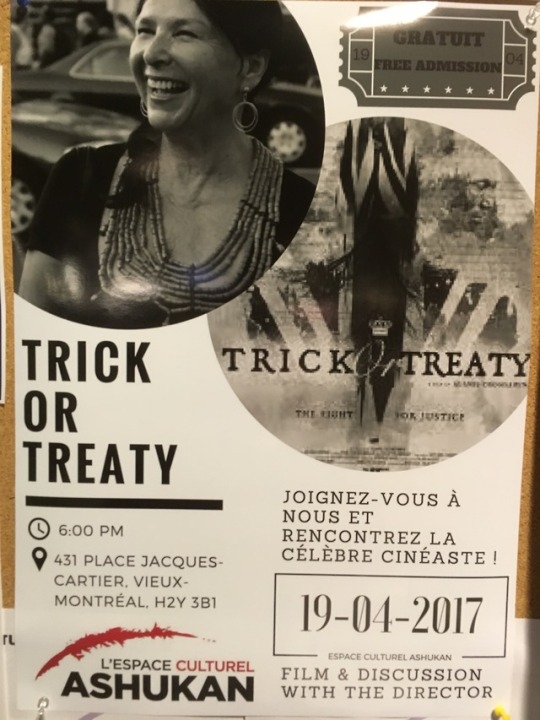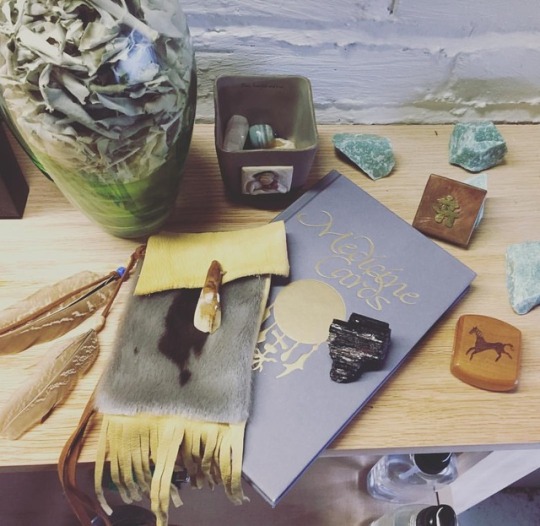#ashukane
Conversation
Texts || Klaine 2.0
Blaine: K where are you hiding? I can't find you
96 notes
·
View notes
Conversation
Text | Kane
Rachel: Hey! Long time no see or talk!
Rachel: How are you? I miss you.
Rachel: Could I get the number for your tattoo parlor?
18 notes
·
View notes
Note
Klaines pregnant

Okay, but if it was actually possible for two guys to get pregnant, I still wouldn’t believe you. Maybe Kane with some other guy, but not Blaine. He’s too sweet and innocent. That relationship has got to be a sexless one.

Agreed. Blaine is way too vanilla.
2 notes
·
View notes
Conversation
TEXT ✉ FUCKER & TROUBLE
KOLBY: Tell Uncle Burt I said hi.
KOLBY: And eat a fuck ton for me.
16 notes
·
View notes
Conversation
TEXT ✉ Kane&Jeff
Kane: Sorry dude, my mom isn't exactly around.
Jeff: Shit, sorry. This was meant for my brother.
Jeff: And sorry about that, too.
36 notes
·
View notes
Text

How to properly wash your hands. #Ashukan #AshukanFoundation
1 note
·
View note
Text
For 27 years now, Présence Autochtone (Montreal First Peoples Festival) has been championing the lives and culture of the indigenous people of Canada and further afield, at its annual festival in the Quebec Province city. What was originally a somewhat niche film festival, has grown into a much larger event encompassing all of the arts. Films are still very much at its core, with offerings from across the globe showing in cinemas and other venues around the city. Documentaries make up a large part of the feature film programme, as there are still many issues to be investigated and tackled, but the fictional films also address them, and often in a more palatable way. And some films cross into both genres, such as Kuun metsän Kaisa, which mixed fairytales, animation, archive footage and social history of the Skolt Sami people of Lapland. The film went on to win the festival’s best film and best documentary awards.
What was particularly encouraging to see was not only the number of short films showing, but also how the quality has also grown with the quantity. This can primarily be attributed to the ongoing work that Wapikoni Mobile is doing, taking filmmaking and other media skills to the First Nations communities. They work almost exclusively with the youth, many of whom are disillusioned and unsure of their identities and future. Through filmmaking, they are able to explore the conundrum between tradition and today’s digital, social-media driven world. The project is uncovering a lot of talented young storytellers, who would otherwise have trouble expressing themselves.
The amalgamation of heritage and modernity was perfectly displayed in the art exhibition From Smoke to Cyber Signals at Espace Culturel Ashukan. Artist Carmen Hathaway has combined digital and 3D art with ideas from traditional stories and myths, which are then printed onto canvas. Some of the images are very finally detailed and look like they are created with brush and paint or airbrushes.
This fusion of traditional and contemporary cultures was also extended to the food that was on offer in Place des Festivals, which is very much the public face of the festival, with its giant teepee dominating the square in the downtown entertainment quarter. Usually when one talks about fusion food, one thinks of traditional food that has been spoilt by Westerners that think they can improve on dishes that have been perfected over centuries and millennia (I’m specifically thinking of Indian and Middle Eastern/North African food, where the combination of ingredients and spices take on health-giving properties). However, in this case, indigenous chef George Lesner has taken a different approach.
“I want to define what indigenous food is. I do not think it solely consists of ingredients and recipes from pre-colonial contact. That was such a long time ago, and what has happened to our land, people, culture and relations have changed our diets and needs dramatically over the years. What we cooked 600 years ago to survive was completely different to what we cooked when our meat was taken away by colonisers, and rotten flour was given to us instead. With my food, I want to represent our peoples’ struggles, and innovations we were forced to go through. I want to showcase that we are a contemporary peoples, as well as make a statement that we may have had our land taken away. Colonisers may have taken many of our lives but our resilient spirit is still here, and our resistance is not going anywhere.”
As such, he has created dishes that use local ingredients and are prepared with influences of French cuisine, that appeal to the sophisticated palettes of the Quebecois.
Another area where cultural fusion works particularly well is music. It is a universal language that spans the limitations of geography, heritage and time. Ignoring the most pretentious of musical snobs and purists, for most people born post WW2, rock music is what they were raised on. Along with blues and jazz, it is possibly the greatest contribution to modern culture the US has made.
Our voices, and drums, are our most primordial means of communication, and listening to the Buffalo Hat Singers, you can feel that right to the core of your being. For me, if music doesn’t have live drumming it is lacking its heart and soul. Of course, a great voice accompanied by a solo guitar also works.
Music has become a vital and integral part of the festival, and through the free concerts in Place des Festivals, it is now the most popular part. The fact that Présence Autochtone coincides with Osheaga, now Canada’s biggest music festival, happening a short Metro ride away, hasn’t dampened enthusiasm. If Osheaga is Glastonbury, then this is WOMAD. The “world music” aspect was further highlighted this year through the festival’s collaboration with Vive 375, a year-long celebration of Montreal’s 375th anniversary.
Présence Autochtone is not only a celebration of the aboriginal heritage of Canada and the Americas, but the indigenous people around the world that have suffered at the hands of European Christians and imperialists. The festival’s annual parade and presentation has always celebrated the city’s diverse cultures, which make it the vibrant place it is, which is especially evident during the balmy summer months.
Thursday evening saw Silla + Rise performing a fascinating mix of Inuit throat singing combined with electronic beats. Some of the songs were freeform, like hip-hop or even jazz scatting. A rather fascinating and unique sound.
Like the previously mentioned Wapikoni, Musique Nomade is an initiative for indigenous musicians to record, promote and distribute their music. The music available is as diverse as the nations it comes from, and with a multitude of influences. This was perfectly displayed at Nikamotan MTL, a showcase of Musique Nomade artists that featured individual performances and duets, embracing styles from blues to hip-hop to country to reggae.
This musical cross-pollination continued on the Saturday evening with Nova Stella, which incorporated a panoply of musicians and spoken-word artists from across the city’s émigré communities. As with the previous night’s Nikamotan MTL, there were duets from unlikely pairings of diverse performers. Rap and hip-hop were fairly predominant, but the highlights were Congolese singer Pierre Kwenders, who mixes rumba with electronic beats and a riveting stage presence; Shauit, a regular at the festival, performed original reggae songs in his native Innu tongue; and Nomadic Massive, an international collective of musicians whose upbeat mix of primarily hip-hop and soul, proved to be a crowd-pleasing finale to the evening.
The importance of first nation people’s contribution to contemporary music was further underlined in the closing night film Rumble: The Indians Who Rocked the World. The film’s title comes from the classic instrumental by Link Wray, who was a native American. Released in 1958 it was a groundbreaking guitar tune that predates the current garage and surf rock by 50 years, and was a major influence on the world’s great rock guitarists such as Led Zeppelin’s Jimmy Page. Despite this, Wray’s heritage was unknown or hidden from the general public.
As I previously said, contemporary (20th century) American music, which encompasses jazz, blues, folk and rock, is arguably the nation’s greatest contribution to world culture, and for the most part is attributed to African-Americans, but this film reveals that the First Nations’ people played a far more influential role than is generally known. Part of this is due to the fact that the Indians were even more marginalised and persecuted than the blacks, and their story suppressed (in much the same way as the genocide of Roma/Sinti in Nazi Germany is). The film investigates the cross-pollination of Afro-American and First Nations’ people, both physically and culturally. Jimi Hendrix is undoubtedly one of the most famous sons. The film also looks at other influential artists such as blues singer Charley Patton, jazz singer Mildred Bailey, the aforementioned rock guitarists Link Wray, protest folk singer Buffy Sainte-Marie (who became a victim of a CIA/FBI witch hunt), The Band’s Robbie Robertson, as well as the tragic story of prodigious guitarist Jesse Ed Davies. The film also interviews many luminaries from the music world who all attest to the important contributions and influence of these musicians, and the music of the indigenous people in general.
This is a brilliant, eye-opening documentary that adds a vital chapter to the origins of modern music, and served as fitting coda to the festival that had been celebrating the universality of music, as well as highlighting, through its film programming, the ongoing struggles, and triumphs, of aboriginal people throughout North America and the rest of the world.
Should you ever find yourself in Montreal in the summer months, possibly to take in the plethora of high-profile festivals, take time out to explore the offerings of Présence Autochtone, with its free music concerts and thought-provoking films.
Présence Autochtone For 27 years now, Présence Autochtone (Montreal First Peoples Festival) has been championing the lives and culture of the indigenous people of Canada and further afield, at its annual festival in the Quebec Province city.
#Canada#concert photography#festival#film review#First Peoples#gig photography#guitars#Live music#Montreal#music photography#Musique Nomade#Présence Autochtone#Rumble
2 notes
·
View notes
Photo

0 notes
Photo

Native powered: New addition to my medicine bag of healing tools. This native seal fur, deer skin, buffalo tooth aboriginal satchel will hold sacred crystals during my ceremonial cleansing. #grateful #Ashukan #ashukanmtl #ashukanculturalcentre #animalmedicine #shamanic #shamanicnotes #intuitivehealing #intuitive #healingmuse #healingmuseapothecary
#intuitive#healingmuse#healingmuseapothecary#animalmedicine#ashukan#intuitivehealing#ashukanculturalcentre#ashukanmtl#shamanic#shamanicnotes#grateful
0 notes
Text
375 years—and more—of Montréal Indigenous culture
Montréal’s 375th anniversary marks the official founding of Ville Marie by Europeans in 1642, but long before the Europeans arrived, there was a rich tapestry of First Nations cultures all along the St. Lawrence River. Montréal was established on Mohawk (Kanien’keha:ka) land, and in celebrating its upcoming anniversary, the City has partnered with the Urban Aboriginal Strategy Network (UASN) to provide an eclectic array of events throughout the year celebrating Montréal Indigenous arts, cultures, and history.
#ashukanmtl #firstnation #native #powow #tourismemontreal #tourismequebec #tourismeautochtone #levoir #regalia
Une publication partagée par Sacred Fire Productions (@ashukanmtl) le 16 Sept. 2016 à 12h21 PDT
Montréal Pow-Wow
There is no better place to encounter First Nations culture than at a pow-wow, which is an exchange and celebration of cultures through dance, song, community, trade, and food. What began as a demonstration pow-wow for students on a college campus four years ago has snowballed into the present-day Montréal Pow-Wow, showcasing top-notch songs, dances, and regalia on the island of Montréal. After tripling in size with each new year, the weekend-long pow-wow is guaranteed to host a variety of some of the best singers, dancers, and drummers in the province (and northeast U.S.).
Rendez-vous des Arts Métissées
The fifth annual edition of Sacred Fire Productions’ Rendez-vous des Arts Métissées is a festival of collaborate creation, be amplified by support from the 375th organizers. When it opens in June, it will be taking place all over Old Montréal, bringing Indigenous and Indigenous-friendly music, crafts, theatre, arts, and multidisciplinary experiences to public spaces everywhere. With a multitude of outdoor and family-friendly events, this will be an ideal destination for those with children.
Ashukan Cultural Space
Sacred Fire Productions is committed to promoting the richness and variety of contemporary Aboriginal art while bridging Indigenous and non-Indigenous cultures in Montréal. In the heart of Old Montréal, its Ashukan Cultural Space is a physical headquarters for that project. With an activity space on its top floor, an art gallery on the second storey, and a boutique on the first, Ashukan is a one-stop shop for those wishing to see genuine Indigenous culture sold in a way that gives the profits directly to the artists in a sustainable, fair-trade manner. In addition to organizing the Rendez-vous des Arts Métissés during the summer, Sacred Fire Productions will be staging a variety of art shows, musical events, and other cultural occasions throughout the year at this location.
The First People’s Festival
The First People’s Festival, a week-long festival of Indigenous culture, is in its 27th year, though since it has moved to the Place des festivals, its growth has been dramatic. The esplanade will be transformed by the addition of First Nations teepees, Inuit tupiks and Iroquoian longhouses (representing Montréal’s specific Mohawk history). Against this backdrop, the Festival presents nightly film screenings, indoor and outdoor concerts and theatre plays, while affiliated art exhibitions take place in galleries all around the neighbourhood.
Wapikoni Mobile
A bright star among the constellation of new Indigenous arts platforms, Wapikoni Mobile is a non-profit organization that brings a mobile film-production studio to First Nations and Inuit communities and teaches First Nations youth how to make films of their lives. To date, they have produced 750, with dozens winning awards in festivals around the world. In keeping with their mobile spirit, this summer Wapikoni—in partnership with Musique Nomade and as part of the 375th celebrations—will carry projectors all over Montréal on depanneur-style delivery bicycles, turning back-alleys in every borough of the city into makeshift movie-theatres.
Aboriginal Innovation
The Montréal Science Centre has drafted a mixed Indigenous and non-Indigenous team to develop this exhibition for October of 2017, which is part of the 375th anniversary celebrations. Indigenous Innovations will celebrate the full history of Montréal Indigenous societies, development, and traditions across a time frame of many thousands of years. As an Indigenous co-creation, this exhibit will first be tested before audiences of Mohawk students before it opens to the public, making sure that every detail is culturally and historically accurate.
Up next:375 things to do in Montréal in 2017
The post 375 years—and more—of Montréal Indigenous culture appeared first on Tourisme Montréal Blog.
http://ift.tt/2lqckM1
0 notes
Conversation
Texts || Klaine 2.0
Blaine: Hey
Blaine: Do you have a minute?
#t:kane#a:kane#ashukane#//today was one of the fall break days so i'm gonna say this was a few hours after the para happened
91 notes
·
View notes
Conversation
Text | Kane
Rachel: Is Sebastian your bestie?
69 notes
·
View notes
Conversation
TEXT ✉ FUCKER & TROUBLE
KOLBY: I'm fine, I'm fine.
KOLBY: You don't need to come. Honestly.
30 notes
·
View notes
Conversation
TEXT ✉ Kane&Jeff
Jeff: Since we all got tattoos together, does it mean we’re in a gang now? The “Last Minute Tattoo” gang?
52 notes
·
View notes
Text
jemappellekane replied to your post “1-5”
…Current parents?
Yes. As in not the parents I had about 7 years ago.

11 notes
·
View notes